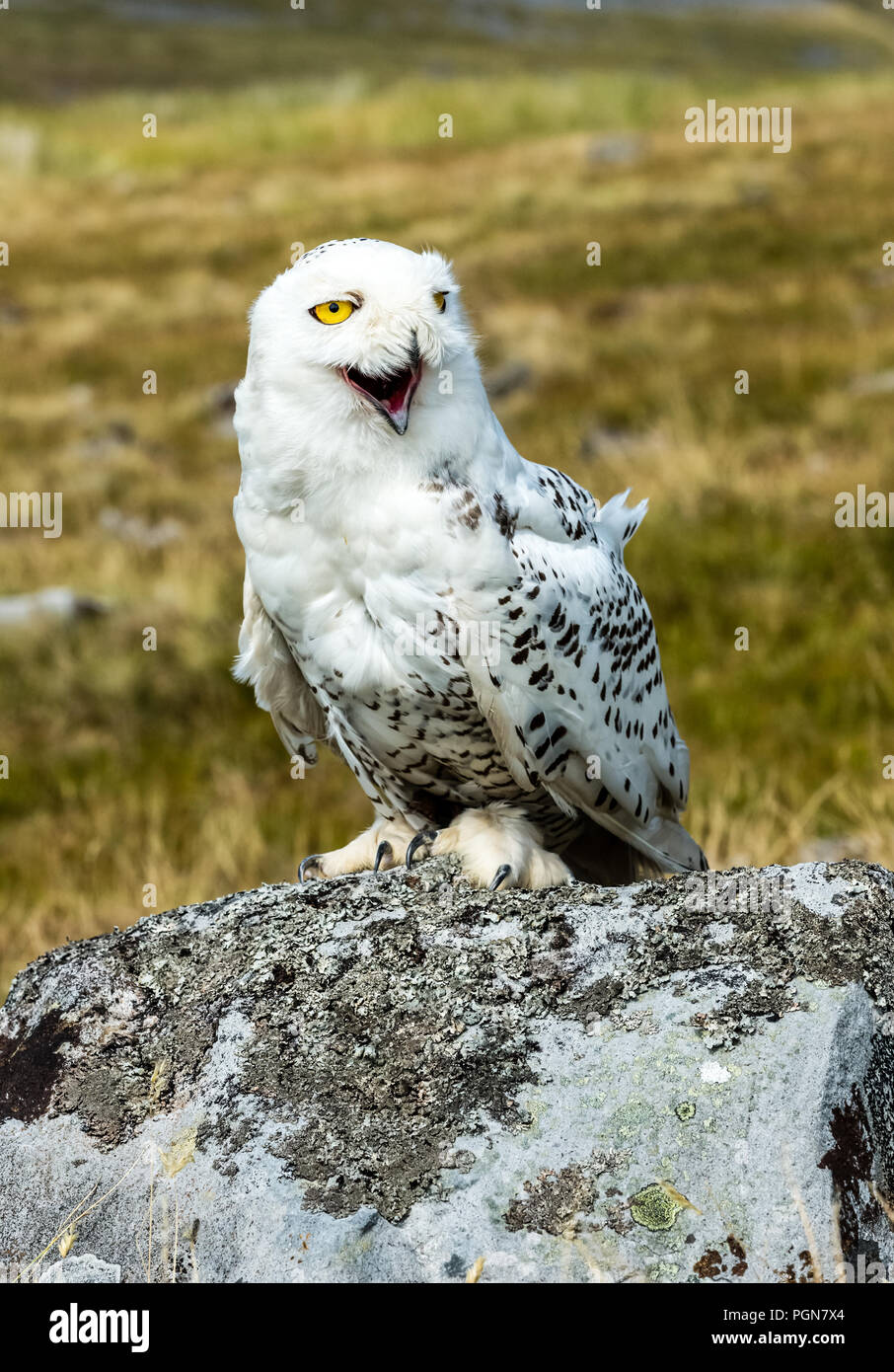Have you ever considered the secrets hidden within a scientific name? It’s more than just a label; it’s a condensed encyclopedia of information about an organism. Take Bubo scandiacus, the scientific name for the snowy owl. It hints at the owl’s lineage, habitat, and even certain behavioral traits. But how much can we actually decipher from these two Latinized words?
Let’s embark on a journey into the etymology and biological significance of Bubo scandiacus. We’ll dissect each component of the name, uncovering the layers of meaning embedded within, while also exploring how scientific nomenclature plays a crucial role in our understanding of the natural world.
Unpacking Bubo: A Genus of Horned Owls
The first part of the binomial nomenclature, Bubo, designates the genus to which the snowy owl belongs. This is not exclusive to snowy owls, it groups them with other horned or eagle-owls. This association immediately informs us that snowy owls are not solitary outliers in the avian world. They share ancestral characteristics and evolutionary history with a diverse group of raptors.
The genus Bubo encompasses a wide array of owl species, characterized by their prominent ear tufts (often referred to as “horns,” though they are not true horns). These tufts are merely feathers, yet they contribute to the owls’ imposing appearance and potentially aid in camouflage or communication.
Consider the Great Horned Owl (Bubo virginianus), a widespread and formidable predator found across North and South America. Its physical resemblance and shared genus with the snowy owl suggest common ancestry and similar adaptations for nocturnal hunting.
Furthermore, studying the genetic relationships within the Bubo genus helps scientists trace the evolutionary pathways that have led to the diversification of these owl species. Molecular phylogenetics provides valuable insights into how different Bubo species have adapted to various ecological niches across the globe.
Scandiacus: A Nod to the Arctic Realm
The species epithet, scandiacus, provides a geographical clue to the owl’s preferred habitat. It’s derived from “Scandia,” the Latin name for Scandinavia, and essentially translates to “of Scandinavia” or “from the Scandinavian region.” This immediately paints a picture of a bird adapted to frigid, northerly climates.
While snowy owls are not exclusively confined to Scandinavia, their primary breeding grounds are located in the Arctic regions of North America, Europe, and Asia. The name scandiacus encapsulates this crucial aspect of their ecology. They are creatures of the tundra, perfectly suited to withstand harsh winters and long periods of daylight during the breeding season.
The association with Scandinavia also highlights the owl’s circumpolar distribution. The term “circumpolar” signifies that the species is found in a ring around the North Pole, encompassing various Arctic and subarctic regions. Their presence in these diverse yet interconnected environments demonstrates their adaptability and resilience.
The choice of scandiacus over, say, arcticus (though scientifically defensible) provides a nuanced perspective. It connects the owl to a specific cultural and historical region, enriching our understanding beyond mere geographical location. It hints at the long-standing human awareness of this magnificent bird in the Nordic lands.
Beyond the Name: Unveiling Deeper Connections
The scientific name Bubo scandiacus is not merely a static label; it’s a portal to understanding the snowy owl’s biology, ecology, and evolutionary history. By dissecting the name, we gain insights into its relationships with other owl species and its adaptations to the Arctic environment.
Moreover, the scientific name facilitates clear communication among scientists and conservationists worldwide. Regardless of language or cultural background, Bubo scandiacus unequivocally refers to the snowy owl, preventing confusion and enabling effective collaboration in research and conservation efforts.
However, scientific names are not immutable. As new genetic data emerge and our understanding of evolutionary relationships evolves, the classification of species may change. It is conceivable, though unlikely, that the snowy owl could be reclassified into a different genus or even have its species epithet altered. This highlights the dynamic nature of scientific knowledge and the ongoing process of refining our understanding of the natural world.
Indeed, the story of Bubo scandiacus reminds us that even the simplest-seeming designations can harbor profound scientific significance. It challenges us to look beyond the surface and appreciate the intricate web of connections that link all living things.
The next time you encounter a scientific name, consider it an invitation to explore the fascinating world of taxonomy, evolution, and ecology. You might be surprised by what you discover. The simple act of understanding the root of a creature’s nomenclature invites a fuller appreciation of its place in the ecosystem.
